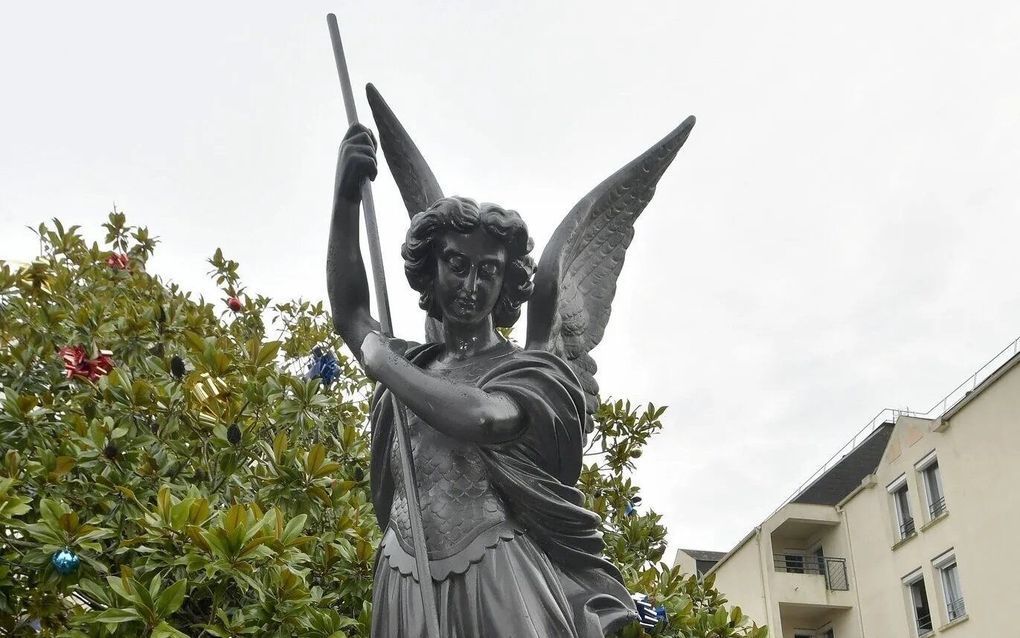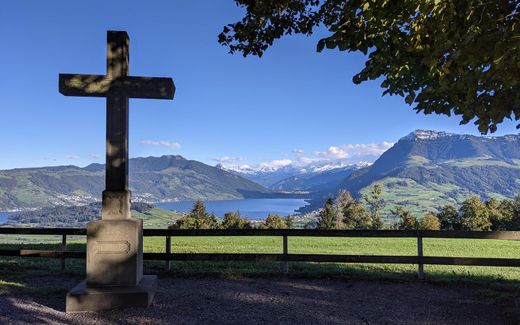An angle in the public space, is that acceptable?
08-11-2022
Western Europe
Mark Wallet, RD

Michael in Sables-d’Olonne. beeld La Croix
Western Europe
In front of St Michael's church in the western French coastal town of Sables-d'Olonne, Archangel Michael stands proudly on his pedestal. His feet rest on a dragon-like figure, and his spear is pressed to his head. It references a passage from the Book of Revelation, which tells how Michael and his angels battle the dragon or devil.
Between 1935 and 2017, the statue stood in the schoolyard of the local St Michael's school. When that closed its doors, the town council found a new site in front of St Michael's church. An appropriate location, you would think. But the association La Libre Pensée, which advocates the strict separation of church and state, thought otherwise. After all, the square does not belong to the church but is a public space. And there should therefore be no religiously inspired statue there.
The case went to the court in Nantes, which ruled in favour of the strict laicists. The court ruled that the city council must remove the statue under the 1905 law regulating the separation of church and state. The law explicitly prohibits the erection or display of religious signs or symbols in public places. The civil municipality appealed, but the result in September was not in their favour.
Mayor Yannick Moreau of Sables-d'Olonne, however, does not intend to simply resign himself to the ruling. According to the council, the statue has not only religious value but also artistic, cultural and historical relevance. According to a referendum organised by the municipality in March, 94.5 per cent of residents want Michael to stay where he is. In protests against the statue's removal, the regional association of paratroopers is singing a hearty tune, as St Michael is the patron saint of paratroopers.
The issue has also reached the columns of national newspapers. Last week, in Le Figaro, legal expert Etienne Madranges wondered what else should be at stake in line with the Nantes court ruling. He argued that in the department where Sables-d'Olonne is located, Vendée, 63 communes are named after a saint. In the whole of France, there are 4,600 communes or 13 per cent of the total. Should all these names with a religious association disappear? And what is St Michael's Fountain still doing in Paris, with a huge archangel statue? Madranges argues that Michael is no longer an exclusively religious symbol but part of French culture.
Now, La Libre Pensée makes clear on its own website that it is not aiming for a national iconoclasm but mainly wants to prevent new religious symbols from reaching the public space. Clarifying signs can be placed at the rest. However, a healthy sense of history seems the best remedy here. This should include a relaxed approach to the 1905 law, also because the context back then is totally different from todays. In France, the once-powerful Roman Catholic Church has long since been relegated to the margins. Crusades against statues of an archangel, therefore, mainly indicate an overstrained form of religious stress.
This article was translated by CNE.news and previously published in Dutch daily Reformatorisch Dagblad on November 4th, 2022.
Related Articles





